Top 13 Trees and Shrubs With Berries for Birds
Updated: Dec. 14, 2023
Tasty fruits dangling from open branches entice birds, like cedar waxwings and American robins. Check out the best bird berries you should grow.
As temperatures drop and snow blankets the ground, hunting for food can become difficult for birds. Berries are an irresistible treat for birds, particularly in winter when food is scarce. Many plants that bear berries (or fruits that resemble them) serve up a cold-weather feast—and a visual treat for you. The fruits produced by these trees and shrubs provide calories and crucial nutrients that your favorite songbirds need. Check out our picks for trees and shrubs with bird berries.
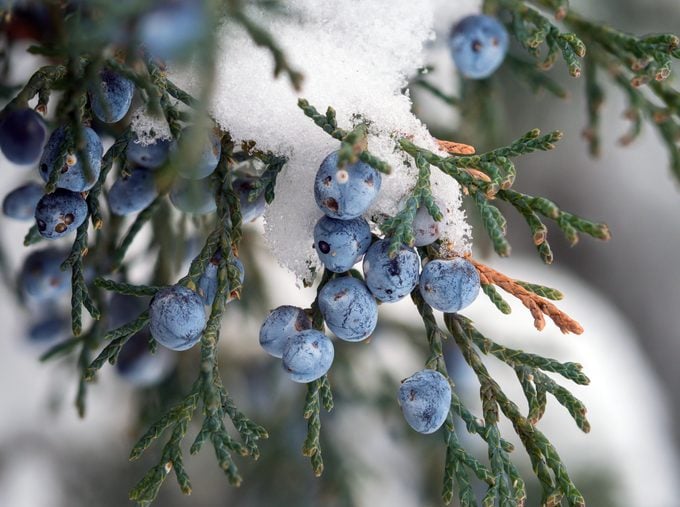
On This Page
Eastern Red Cedar
Juniperus virginiana, zones 2 to 9
Size: 40 to 50 feet tall, 8 to 20 feet wide
The eastern red cedar is a juniper that grows in much of the Midwest and the eastern U.S. It produces a bluish black fruit that ripens from September to October, and while it looks berrylike, it is actually the female cone. These “berries” are well-loved by cedar waxwings in particular, but many birds and mammals feed on them throughout the winter. It may be tempting to grow several trees in a large group, but keep eastern red cedar away from apple and crabapple trees. A fungus known as cedar apple rust thrives when both apples and red cedars are present.
Why we love it: The pyramid shape provides dense nesting and roosting cover for many birds, including sparrows, robins, mockingbirds, juncos and warblers. Birds use the bark for nest material.
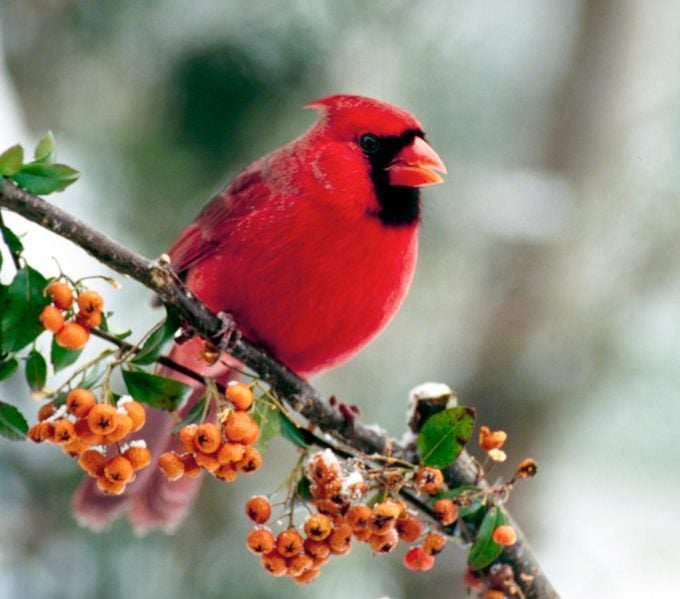
Firethorn
Pyracantha coccinea, zones 5 to 8
Size: 6 to 18 feet tall and wide
Woody plant expert Michael Dirr says it best: “For fruit display in the winter garden, few plants rival pyracanthas.” Birds flock to the clusters of orange to red fruits (technically called pomes, not berries) and may appear intoxicated when fruits are overripe. Firethorns are a source of year-round interest, with creamy flowers, shiny leaves and a bounty of berries that provide winter fuel for feathered friends. Aptly named for its spiny branches and crimson fruit, firethorns adapt to most conditions. Choose one that is resistant to fire blight. It’s considered invasive in some states, so do some homework and know where to plant responsibly.
Why we love it: Because of its fast and dense growth, this shrub does well as a natural privacy screen. Thorns can also deter unwanted wildlife.
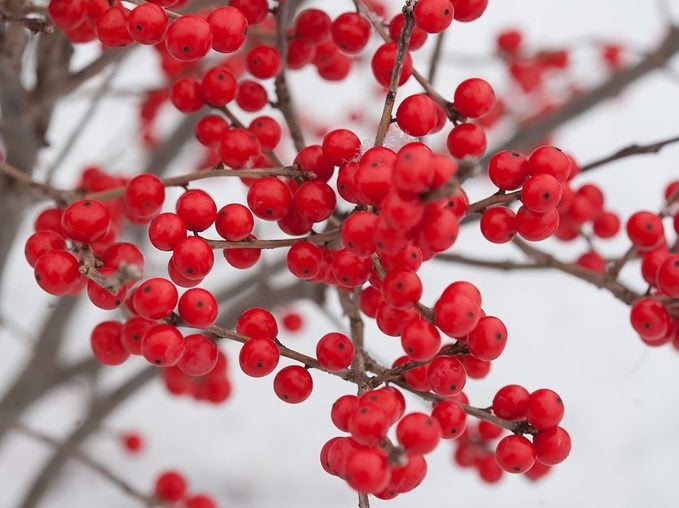
Winterberry
Ilex verticillata, zones 3 to 9
Size: 6 to 15 feet tall and wide, but varies by species
Native to much of the U.S. and Canada, winterberry is a deciduous holly. When its leaves drop, bare branches bedecked in red or gold berries dazzle in drab winter months. The buds grow on old wood, so regular pruning is not suggested to achieve a larger fruit crop. Like many berry shrubs, winterberry only produces fruit on the female plant and requires a male plant nearby for pollination. If plants grow within 40 feet of each other, a single male plant can pollinate 10 to 20 female plants.
Why we love it: Songbirds, waterfowl and game birds love the fruits of common winterberry, especially in late winter when food is scarce. Winterberry grows best in full sun and tolerates wet soil in spring and drought in summer.
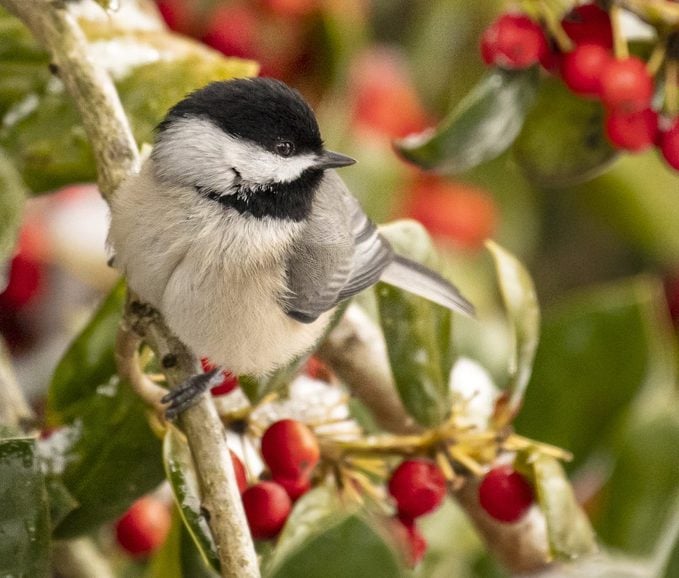
American Holly
Ilex opaca, zones 5 to 9
Size: 20 to 50 feet tall
A mainstay in holiday decor, holly is well known for its leathery green leaves and brilliant red berries, but it is also an excellent winter meal for many birds. While its alluring berries are poisonous to people, birds can safely consume them, but only a few at a time. Since berries only grow on a pollinated female plant, you must have a male plant nearby to ensure fruition.
Why we love it: Crimson bird berries add color to the winter landscape. Plant it in groups for major impact.
Discover more simple tips to attract winter birds.
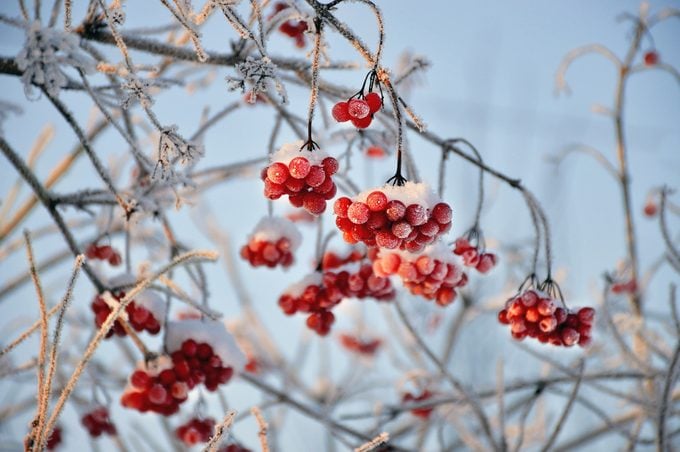
Viburnum
Viburnum spp. zones 2 to 9
Size: 3 to 20 feet tall and wide
With foliage that provides colorful, nutritious berries and shelter for nests, viburnums are a natural haven for many songbirds. Pine grosbeaks, cedar waxwings, cardinals and bluebirds all adore viburnum’s vivid bird berries. Viburnums populate a huge family of plants in a wide range of sizes and habits. While some are evergreen in mild climates, others’ glossy green leaves turn yellow-orange, red or burgundy in autumn. American cranberrybush viburnum is among the best for its handsome rusty-red fall color and use in multiples as a deciduous hedge. For a reliable berry yield, grow two plants together.
Why we love it: Viburnums are also a source of year-round landscape interest, with creamy florets in the spring.
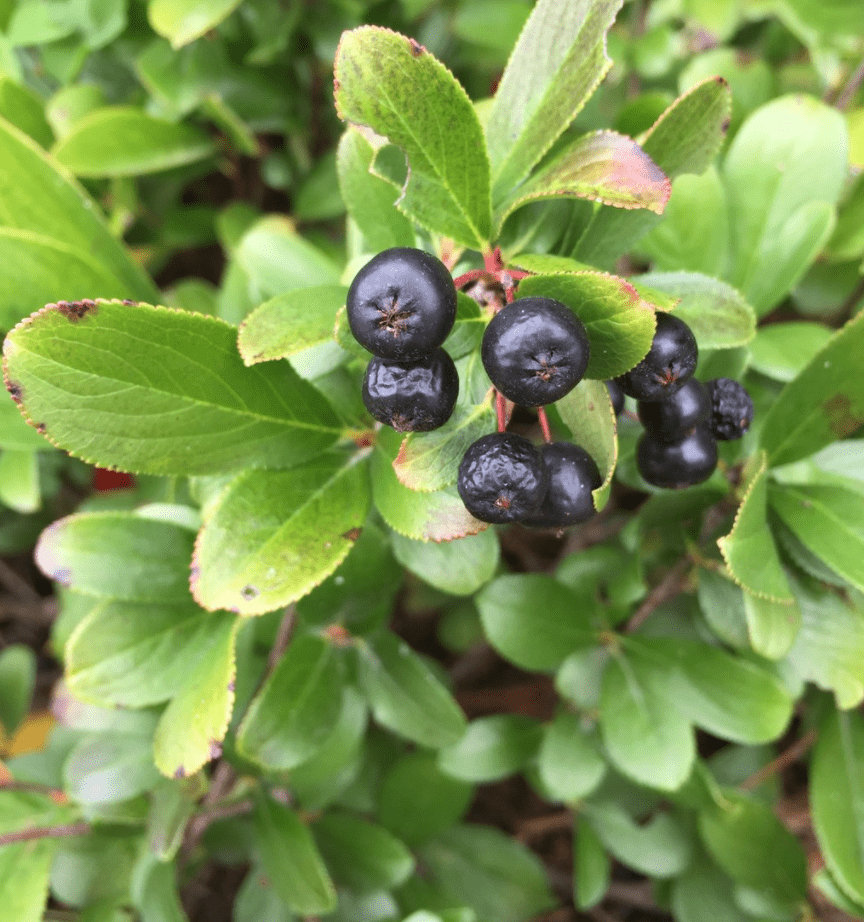
Chokeberry
Aronia, zones 3 to 9
Size: 6 to 10 feet tall and wide, but varies by species
Chokeberry shrubs produce red or black bird berries that are low in fat and protein, so birds wait until the more desirable foods are gone to gobble them up. These tough native plants display lovely fall color.
Why we love it: You may end up battling the birds in order to glean the berries, which are high in antioxidants but require sweeteners to make them palatable to humans.
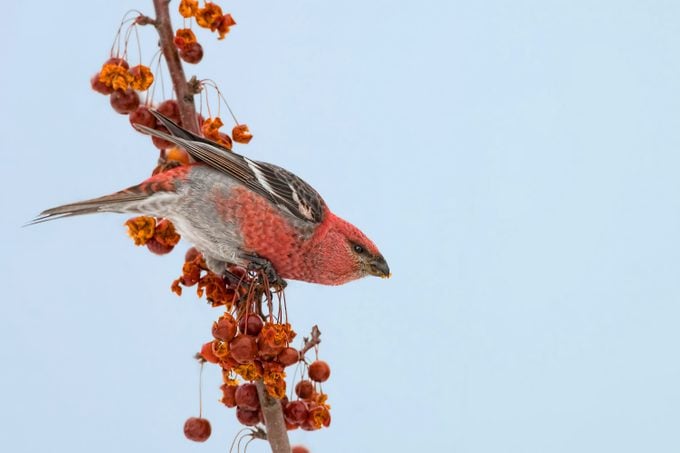
Crabapple
Malus, zones 4 to 8
Size: Up to 25 feet tall and wide
Generally known for beautiful spring blooms, crabapples are also a fantastic source of nourishment for many birds, such as cardinals, cedar waxwings and robins. The fruit starts out hard but becomes more appetizing for birds after a few freeze-and-thaw cycles. There are hundreds of varieties— in some the fruit ripens at different times, and some bear fruit that birds refuse to eat—so do some research before buying to find the right one to fit your (and your feathered friends’) needs. Birds tend to avoid the fruits of Adams, Donald Wyman and Red Jewel but gorge on most of the rest.
Why we love it: Lovely spring blooms of white, pink and almost red.
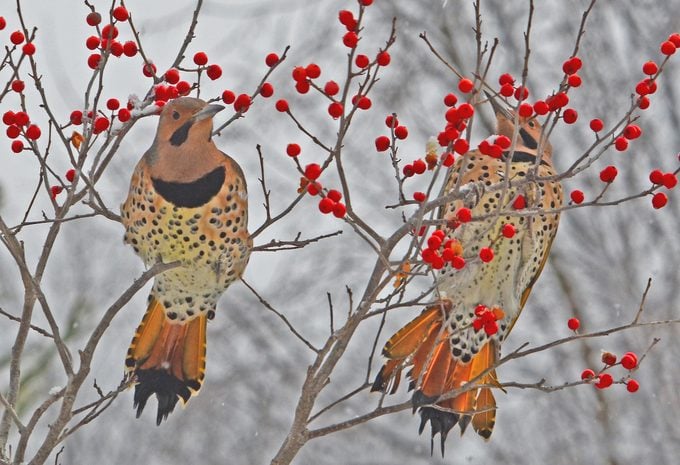
Serviceberry
Amelanchier, zones 3 to 9
Size: May reach 25 feet tall
Hard-working and airy, serviceberries grow as trees or multi-stemmed shrubs. Plant a species that is suited to your region to attract birds and other wildlife. The blooms, foliage and bark stand out when grown against a dark background, like the one evergreens provide.
Why we love it: Four-season interest! From spring blooms to summer fruits to fall color to beautiful winter bark, serviceberry shines.
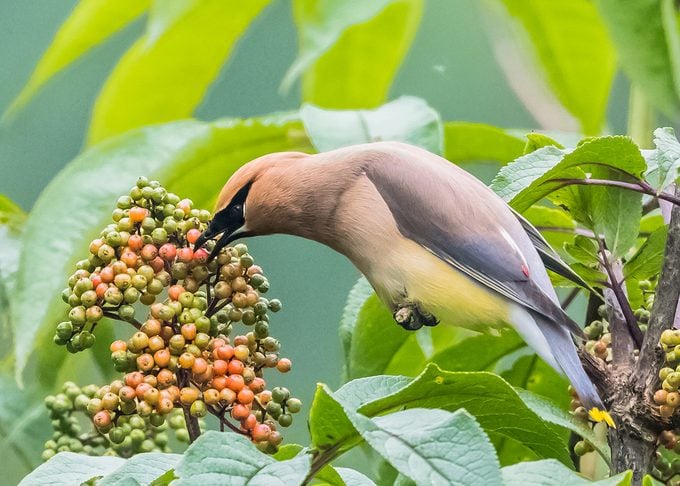
Hawthorn
Crataegus, zones 3 to 8
Size: Up to 30 feet tall and wide
Hawthorn can be a stunning addition to your yard with its pink, white or red flowers in the spring and dazzling yellow or purplish foliage in the fall, but birds love the berries best. The fruit is a bright, glossy red and lasts well into the winter. Thorns up to 3 inches long are both a liability and an asset, so try thornless cockspur, Crataegus crusgalli var. inermis. Unlike many other berry shrubs and trees, they don’t need to cross-pollinate to produce fruit, so you can get away with planting a single hawthorn tree. However, hawthorns take several years to reach fruit-bearing maturity.
Why we love it: Hawthorns tolerate drought, grow in almost any kind of soil and, as noted above, produce fall color.
Discover the best fall shrubs to grow.
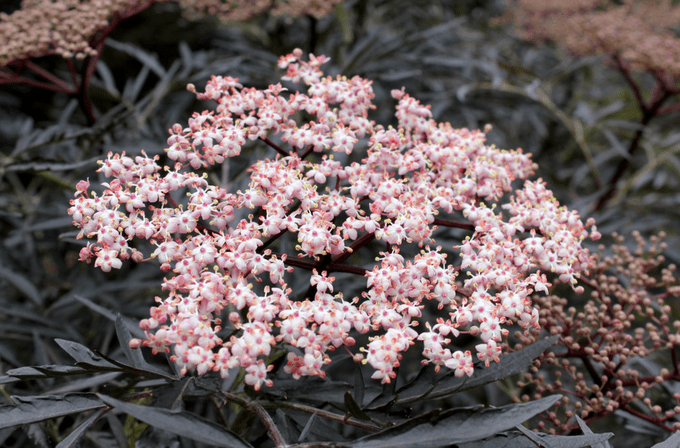
Elderberry
Sambucus, zones 3 to 9
Size: 12 feet tall and wide
This luxurious shrub features long, arching branches. In early summer, it produces flat white flower clusters that turn into purple bird berries by late summer. The fruit is relished by gray catbirds, robins, bluebirds and many other songbirds.
“My husband planted a row of 15 elderberry plants, intending to harvest the berries. We quickly realized the birds loved them and decided to let them feast on the bounty,” says reader Mary Orr.
Why we love it: Butterflies love the showy, fragrant blooms!
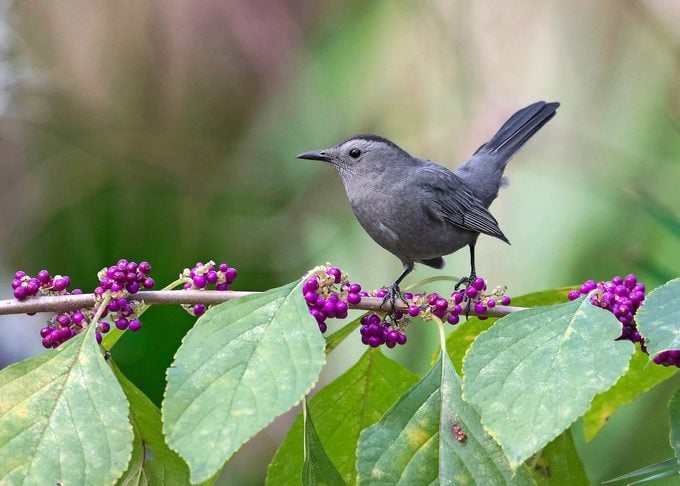
Beautyberry
Callicarpa, zones 5 to 8
Size: 3 to 8 feet tall and wide
Tiny spring flowers produce clusters of magenta, purple or white bird berries that remain on these spreading shrubs after the leaves drop. The fruits become a good food source for many species, including mockingbirds, robins, towhees and brown thrashers.
“Beautyberry is a new favorite of mine. I’m happy to have a variety that will survive our cold winters in upstate New York,” says reader Karen Hance.
Why we love it: It’s so easy to grow—volunteers and seeds dropped by birds may spread quickly.
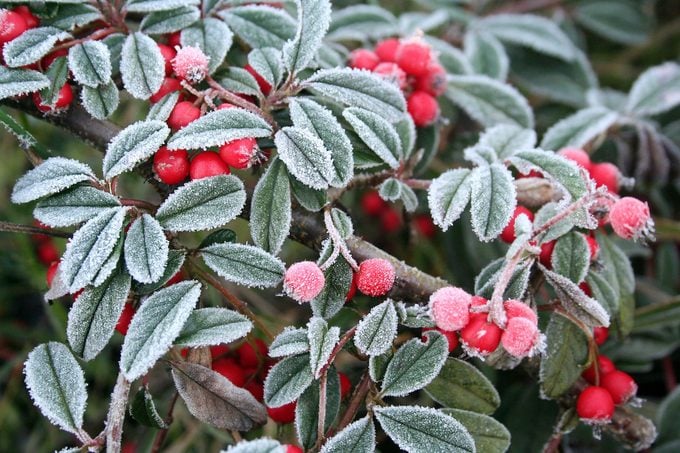
Cotoneaster
Cotoneaster spp, zones 4 to 7
Size: 2 to 3 feet tall, 3 to 6 feet wide
Cotoneaster is a hardy member of the rose family, with twiggy branches that become attractively laden with showy berries in the fall. The scarlet “berries” are actually pomes, and are popular among blackbirds, thrushes and waxwings. However, the plant is nonnative and invasive in some areas, so be sure to verify whether cotoneaster is a good fit for your region.
Why we love it: Cotoneaster comes in numerous varieties—from evergreen to deciduous, and from ground cover to upright bushes, there is a cotoneaster for every gardening need.
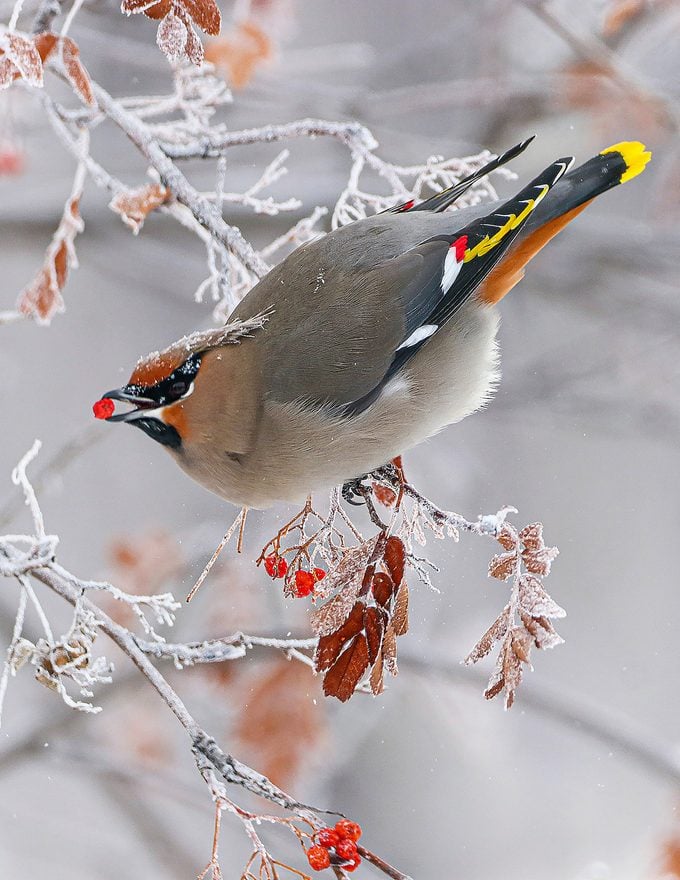
Mountain Ash
Sorbus americana, zones 2 to 6
Size: 15 to 35 feet tall, 8 to 20 feet wide
Several species of mountain ash exist, and while their fruit colors vary, those with reddish orange fruit are the best for attracting birds. Birds are particularly fond of one of the few species native to North America, the showy mountain ash. These trees tolerate shade but prefer full sun and moist, well-draining soil, producing more blooms and a more bountiful berry crop when they get more sunlight.
Why we love it: In spring, clusters of white flowers bloom, and the foliage turns purple in the fall. The bird berries last into late winter.
